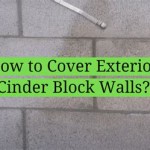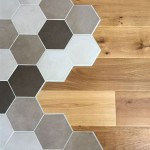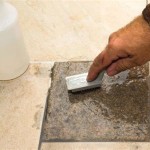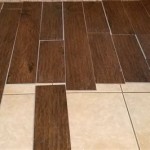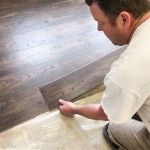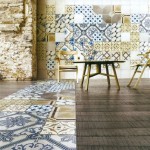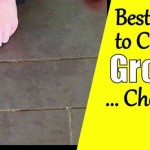What Board Do You Use For Tile Backsplash?
Selecting the appropriate backer board for a tile backsplash is a crucial step in ensuring a durable and aesthetically pleasing result. A backsplash, intended to protect walls from moisture and splashes in kitchens and bathrooms, requires a substrate capable of withstanding these conditions while providing a stable surface for tile adhesion. The materials chosen for this purpose must be resistant to water damage, mold growth, and be able to support the weight of the tile. Several options exist, each with its own advantages and disadvantages, influencing suitability for different installations and budgets.
The choice of backer board directly impacts the longevity and appearance of the tile backsplash. Inadequate preparation or the selection of an inappropriate substrate can lead to a multitude of problems, including tile cracking, grout deterioration, mold and mildew growth, and even structural damage to the wall behind the backsplash. Therefore, a thorough understanding of the available options and their respective characteristics is essential for any successful tile backsplash project.
Cement Board: A Robust and Water-Resistant Option
Cement board is a widely recognized and frequently employed material for tile backsplashes, particularly in areas prone to significant moisture exposure such as behind sinks or cooktops. Composed of cement, reinforced with fiberglass mesh or other fibers, cement board presents a highly durable and water-resistant surface. Its robust nature makes it well-suited for holding heavy tiles, including natural stone or larger format tiles, without risk of flexing or deformation.
One of the principal advantages of cement board is its superior resistance to water damage. Unlike gypsum-based products, cement board does not degrade or crumble when exposed to moisture. This inherent resistance to water makes it a prime choice for environments where water splashing and humidity are prevalent. Furthermore, cement board is inorganic, meaning it does not provide a food source for mold or mildew growth, further contributing to its suitability for damp environments.
The installation process for cement board involves cutting it to the desired size and shape, typically using a utility knife and scoring tool, or a circular saw equipped with a masonry blade. The boards are then attached to the wall studs using screws specifically designed for cement board. Seams between boards are typically reinforced with mesh tape and thin-set mortar to create a continuous and waterproof surface. This step is critical in preventing water from penetrating behind the backsplash.
While cement board offers numerous benefits, it also presents some drawbacks. It is a heavy material, making it more difficult to handle and install than some alternative options. The dust generated during cutting can be irritating to the skin and respiratory system, necessitating the use of appropriate safety equipment, such as gloves, eye protection, and a dust mask. In addition, the rigidity of cement board can make it challenging to work with in areas with complex curves or angles.
Waterproof Gypsum Board: A Lighter-Weight Alternative
Waterproof gypsum board, often referred to as “green board” or “blue board” depending on the manufacturer, offers a lighter-weight alternative to cement board while still providing a degree of water resistance. This type of gypsum board is treated with a water-resistant coating or core to prevent moisture from penetrating the material. It is typically used in areas with moderate moisture exposure, such as bathrooms or kitchens, but is generally not recommended for areas subjected to constant or direct water contact, such as shower walls.
The primary advantage of waterproof gypsum board lies in its ease of handling and installation. Compared to cement board, it is significantly lighter, making it easier to lift, cut, and maneuver. This feature can be particularly beneficial for DIY projects or installations in areas with limited access. The gypsum core allows for easier cutting using a standard utility knife, and it can be fastened to wall studs using drywall screws.
Despite its water-resistant properties, waterproof gypsum board is not entirely waterproof. Prolonged exposure to moisture can eventually lead to degradation of the gypsum core and potential mold growth. Therefore, it is crucial to ensure proper ventilation and to avoid using this material in areas where it will be directly exposed to water for extended periods. Seams should still be taped and mudded as with regular drywall, and a waterproof membrane such as a liquid waterproofing membrane should be applied over the entire surface before tiling.
It's also crucial to understand the limitations of waterproof gypsum board in terms of tile weight. While suitable for lighter tiles, it may not be adequate for heavier tiles, such as large format porcelain or natural stone. In such cases, the added weight could cause the board to sag or even fail over time. Consequently, a more robust material like cement board is generally preferred for heavier tile installations.
Specialty Backer Boards: Exploring Advanced Options
Beyond cement board and waterproof gypsum board, a variety of specialty backer boards have emerged on the market, each designed to address specific challenges or offer enhanced performance characteristics. These advanced options often incorporate innovative materials and construction techniques to provide superior water resistance, insulation, and ease of installation.
One popular specialty backer board is foam-based tile backer board. These boards, often made from extruded polystyrene (XPS) or expanded polystyrene (EPS), are completely waterproof and lightweight. They are available in various thicknesses and can be easily cut and shaped with a utility knife. Some foam boards also feature a thin layer of cement or fiberglass mesh on the surface to provide a better bonding surface for tile adhesives. Foam boards are particularly well-suited for creating waterproof barriers in wet areas, such as shower walls or steam rooms.
Another type of specialty backer board is a composite board consisting of a combination of materials, such as cement and polymers. These boards offer a blend of the benefits of both cement board and gypsum board, combining strength and water resistance with relatively lightweight handling. They are often designed to be easier to cut and install than traditional cement board, while still providing a solid surface for tile adhesion.
The choice of a specialty backer board typically depends on the specific requirements of the project, including the level of moisture exposure, the type and weight of tile being used, and the installer's preferences. While these materials may come at a higher cost than standard backer boards, the enhanced performance and ease of installation can often justify the investment, particularly in demanding or complex projects.
Regardless of the type of backer board chosen, consistent and correct installation practices are vital. This involves ensuring that the board is properly fastened to the wall studs, seams are adequately sealed, and a waterproof membrane is applied if necessary. Failing to follow these steps can compromise the integrity of the backsplash and lead to water damage and tile failure, even with the most advanced backer board materials.
In conclusion, the selection of a backer board for a tile backsplash requires careful consideration of the environmental conditions, the type and weight of tile, and the installer's skill level. While cement board remains a reliable and widely used option, waterproof gypsum board and specialty backer boards offer viable alternatives with distinct advantages. Understanding the attributes and limitations of each material allows for informed decisions, ensuring a durable and visually appealing tile backsplash that will withstand the test of time.

How To Install Kitchen Backsplash Tile Four Generations One Roof

How To Hang Cement Backer Board For A Wall Full Of Tile Young House Love

Our Cement Board Siding Backsplash Thrifty Decor Diy And Organizing

How To Hang Cement Backer Board For A Wall Full Of Tile Young House Love

Cement Board Height For Backsplash Home Improvement Stack Exchange

How To Install Kitchen Backsplash Tile Four Generations One Roof

How To Hang Cement Backer Board For A Wall Full Of Tile Young House Love

Putting Up A Tile Backsplash An Installation Guide

Diy Kitchen Shiplap Backsplash Easy Installation

Our Cement Board Siding Backsplash Thrifty Decor Diy And Organizing
Related Posts

